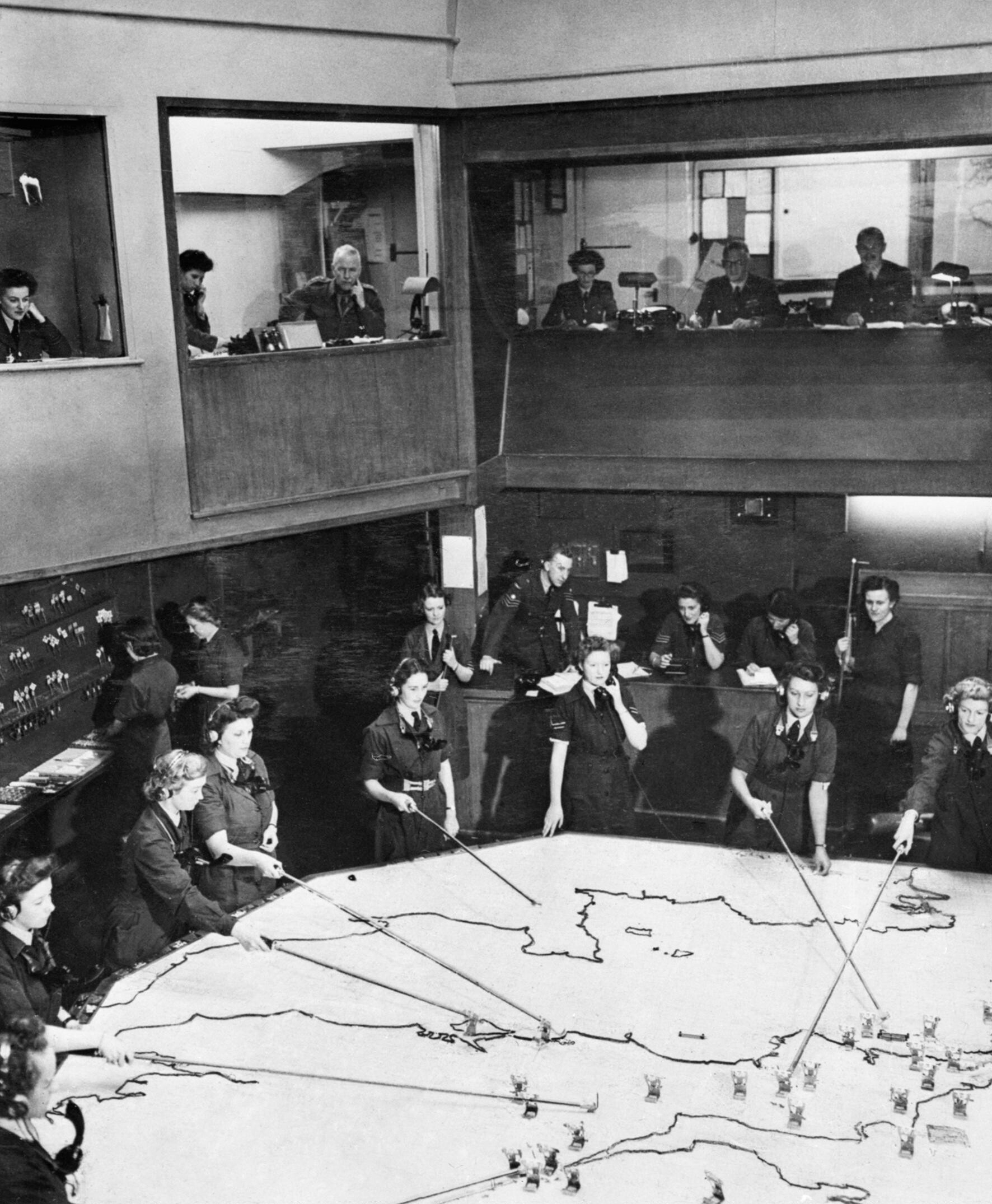Browns Quarry had a vertical shaft entrance and was known by the quarrymen as ‘Starve Hole’ as it was difficult working and is relatively small at 43,000 sq ft. Eventually it was linked to the complex of quarries nearby possibly to improve access via a long narrow heading. This quarry underwent some of the most extensive and challenging changes of all the MOD quarries being now part of the large Tunnel Quarry complex and adjoining the Central Ammunition Depot
An underground operations room was built as part of the RAF’s Command Centre for No. 10 Group. The work called for the construction of two chambers, 15 meters square and 13 meters high, both with two mezzanine observation floors. The walls of the operations room were finished in a special paint scheme consisting of greens and yellow, designed not to distract the operator. The control room centred around a plotting table, the controllers could monitor the progress of the enemy towards Britain from the two wooden mezzanine floors above. The control room was responsible for nine fighter air fields in the West of England and Wales which were home to 19 squadrons using 113 aircraft. The group commander who sat in the gallery would scramble appropriate squadrons to intercept the enemy based on information given to him from fighter command headquarters at Bentley Priory in Stanmore, Middlesex. In 1945 the room became a radar training centre and between 1951 and 1955 it was the Section Operations Centre for the United Kingdom Radar Air Defence System codenamed ROTOR, but by late 1955 the control functions had been proved inefficient and the site was vacated. The UKWMO (UK Warning and Monitoring Organisation) based at Rudloe Manor moved into Browns Quarry until 1969 when it moved to Bath. The plotting room was stripped of all fittings soon after this date, yet no further use was found for this area for decades.
The main northern part of Browns Quarry was converted for use as the Controllerate of Defence Communications Network (CDCN) moving from RAF Medmenham in Buckinghamshire in 1977 as part of the rationalisation of tri-service communications using a mix of Satellite, HF Radio, Tropospheric
Scatter, Radio Relay and Landline equipment. This too became redundant in the 1990’s and all the equipment was removed other than power and lighting facilities.

